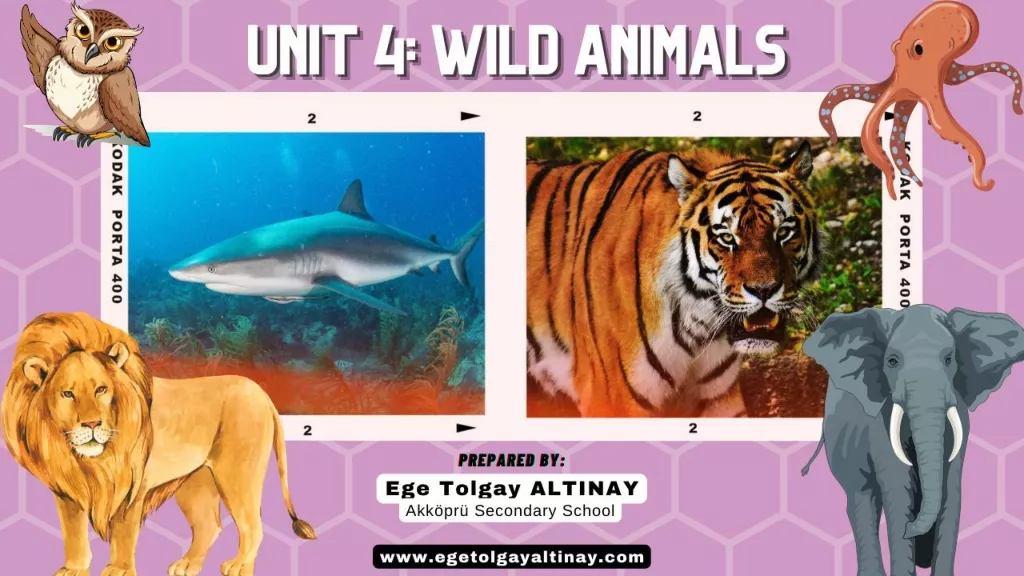Introduction to Animal Habitats: Understanding how Animals Adapt to Their Environments
Explore the fascinating world of animal habitats with this educational session designed for children aged 8-9. Parents are encouraged to support their child's learning by delving into the concept of habitats, the adaptations of animals, and the conditions that influence their survival. From Arctic den-dwelling polar bears to desert-dwelling elf owls, this session covers a range of habitats and animal adaptations. Engage in activities, discussions, and multimedia resources to enhance understanding and appreciation of the diverse habitats in which animals thrive.
Download Presentation

Please find below an Image/Link to download the presentation.
The content on the website is provided AS IS for your information and personal use only. It may not be sold, licensed, or shared on other websites without obtaining consent from the author.If you encounter any issues during the download, it is possible that the publisher has removed the file from their server.
You are allowed to download the files provided on this website for personal or commercial use, subject to the condition that they are used lawfully. All files are the property of their respective owners.
The content on the website is provided AS IS for your information and personal use only. It may not be sold, licensed, or shared on other websites without obtaining consent from the author.
E N D
Presentation Transcript
Living things and Living things and their habitats their habitats For parents Thank you for supporting your child s learning in science. Before the session: Please read slide 2 so you know what your child is learning and what you need to get ready. As an alternative to lined paper, slide 5 may be printed for your child to record on. During the session: Share the learning intentions on slide 2. Support your child with the main activities on slides 3 to 6, as needed. Slide 7 is a further, optional activity. Slide 8 has a glossary of key terms. Reviewing with your child: Slide 9 gives an idea of what your child may produce. Introduction to animal habitats Year 4 Age 8-9
Living things and their habitats Living things and their habitats An introduction to animal habitats Logo for section to sit inside roundel Key Learning Animals live in a habitat which provides an environment to which they are suited. A habitat provides animals with water, food and shelter. Each habitat has different conditions such as the amount of light, the temperature and the amount of moisture. Animals are adapted to live in their habitats. Activities (pages 3-6): 30 - 40 mins Use lined paper, a ruler and a pencil. Alternatively, print page 6 as a worksheet. Find out more (page 7): 30 - 60 mins You may like to explore more about animals in an Arctic habitat or a hot desert habitat. I can Describe how some animals are adapted to live in an Arctic habitat or a hot desert habitat. 2
Explore, review, think, talk. Explore, review, think, talk . What do you already know about animals and their habitats? (5 minutes) Logo for section to sit inside roundel Polar bears live in an Arctic habitat. Female polar bears dig out a den beneath the snow, where they give birth to cubs. They have thick white fur to keep warm. They have webbed front paws and are strong swimmers. A habitat is a place where an animal lives, providing it with water, food and shelter. Many animals have special features or skills to help them survive in their habitat. They are adapted to live there. Watch this BBC clip: https://www.bbc.co.uk/teach/class-clips- video/science-ks1-ks2-wonders-of-nature-polar-bears-in-their- habitat/z73ygwx Where is a polar bear s den? In which habitat do polar bears live? How are they adapted to live in their habitat? 3 3
Watch, read, listen Watch, read, listen Animals are adapted to their different habitats (10 minutes) Logo for section to sit inside roundel Watch this clip about different types of owls. You may have noticed: Snowy owls live in the Arctic and have mostly white feathers as camouflage, so their colour blends in with the snow. Try to jot down the habitats they live in and think about how each owl is adapted to their habitats. Great grey owls live in pine forests and have very thick feathers to keep warm. https://www.bbc.co.uk/bitesize/clips/zv7w2hv Elf owls live in the hot desert and find holes in cactus plants. They hunt insects at night when it is cooler. Flammulated owls live in mountain forests and have feathers which match the pattern of bark on trees for camouflage. 4
Animals are adapted to their habitats Animals are adapted to their habitats Describe the adaptations of animals in an Arctic and a hot desert habitat (page 5-6: 30 minutes) Logo for section to sit inside roundel Many animals have special features or skills so that they are suited to their habitat. These are called adaptations. For example, the Arctic fox and the desert fox are different from the foxes we see in the UK. Watch the first 2 minutes of this BBC clip: https://www.bbc.co.uk/teach/class-clips-video/science-ks2- -ks3-how-animals-have-adapted/z4y76v4 What special features, or adaptations, does the Arctic fox have? What adaptations does the desert fox have? 5
I can describe how some animals are adapted to live in an Arctic habitat or a hot desert habitat. Create a fact file about the Arctic fox, the snowy owl, the desert fox and the elf owl. Use what you have learnt, the word bank and the pictures to help you. large round body and long thick feathers small body with grey-brown feathers thick warm fur white fur in winter sandy coloured fur mostly white feathers small ears large ears nests on the ground nests in holes in cactus plants hunts at night 6
Find out more about Arctic or hot desert habitats Find out more about Arctic or hot desert habitats Extend your fact file with more animals who live in an Arctic or a hot desert habitat (30 60 minutes) Logo for section to sit inside roundel Suggested websites: Arctic habitat https://www.dkfindout.com/uk/animals-and- nature/habitats-and-ecosystems/arctic/ https://www.wwf.org.uk/learn/fascinating- facts/polar-bears https://www.wwf.org.uk/learn/fascinating- facts/walrus hot desert habitat https://www.dkfindout.com/uk/animals-and- nature/habitats-and-ecosystems/american- desert/ https://www.bbc.co.uk/programmes/p006b3m 3 Choose either an Arctic or a hot desert habitat. Find out more about the adaptations of other animals living there. 7
Glossary of terms Environment: The environment includes all living and non-living things. Animals and plants rely on the living and non-living parts of the environment to survive. Habitat: Animals live in a habitat which provides an environment to which they are suited. A habitat provides animals with water, food and shelter. Condition: Each habitat has different conditions such as the amount of light, the temperature and the amount of moisture. Adaptation: Many animals have special features or skills so that they are suited to their habitat. These are called adaptations. Adapted: Animals are adapted to live in their habitats. For example, an Arctic fox has thick white fur in winter for warmth and camouflage. Camouflage: Some animals have camouflage feathers, fur or skin so they are hard to see in their environment. 8
Possible learning outcome for reviewing your work. The Arctic fox has thick fur. Its coat changes from white in winter to brown- grey in summer so it is camouflaged in both seasons. It has small ears so it does not lose The sandy coloured fur of the desert fox reflects heat during the day and its large ears help it to keep cool. It hunts at night when it is cooler, listening for underground insects with its sensitive hearing. Amphibians include frogs, toads and newts. They have a smooth moist skin and are cold blooded. They lay soft jelly-like eggs and can live on land and in the water. warmth. The round body shape and thick long feathers help the snowy owl to stay warm. The feathers also extend over its feet and beak. It nests on the ground and the chicks huddle together for warmth. The elf owl has a small body and grey-brown feathers. It can fit into holes in cactus plants to find shade and a safe nesting place. It hunts at night when it is cool and usually eats insects. 9























